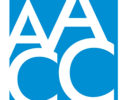Measuring your impact
By AACC 21st Century Center Staff
January 4, 2018
Economic impact studies can help community colleges tell their story.
While stories of student success can be moving, some community college stakeholders are more concerned about numbers – particularly numbers with dollar signs in front of them. Doing an economic impact study can help you prove that investing in your college has a high return.
“Student stories are very powerful. They have even more impact when they are backed up with data that shows what a positive impact the community college has on the local and regional economy,” said Martha Parham, senior vice president for communications and public relations at the American Association of Community Colleges (AACC).
A study conducted in 2014 for AACC looked at the impact of community colleges of on the nation’s economy. The study found that, in 2012 alone, the net total impact of community colleges on the U.S. economy was $809 billion in added income, equal to 5.4 percent of GDP. That information generated positive buzz.
“Having this data helps to provide the necessary business case to support college programs and services,” Parham said.
The Colorado Community College System (CCCS) had an economic impact study conducted to measure the overall impact of its 13 community colleges on the state. The study revealed that Colorado’s community colleges generate $6 billion for the state’s economy.
“We employ thousands of people, we educate hundreds of thousands, and we are contributing billions of dollars to the economy,” CCCS President Nancy McCallin said in a video highlighting the colleges’ contributions to the state.
There’s also a breakdown of the impact of each college separately on its service area.
Pueblo Community College (PCC) and its students — both current and alumni — added $192.6 million in income to the school’s service area economy.
Taxpayers benefit from PCC, according to the study. For every dollar spent to support the operation of PCC, taxpayers receive $4.50 in added taxes and reduced demand for government-funded services. Students’ investments pay off, too. For every dollar they spend on their education, PCC students will earn four times that in future income.
“We’re a very important economic engine,” President Patty Erjavec said in a video promoting the study’s results. Without PCC in Pueblo “we wouldn’t have the capability of individuals providing for themselves and their family.”
Front Range Community College’s alumni, students and college operations add $591 million to the state’s economy.
“FRCC’s economic impact report confirms what I see every day – men and women in our community developing real world skills that lead to meaningful work and economic opportunity,” said FRCC President Andy Dorsey in a release.
Promoting the good news
Once the results of an economic impact study come in, the numbers need to become part of the narrative. CCCS put its study results front and center on its website. Most of the colleges in the system have a special website devoted to the study.
Besides the video, PCC and Community College of Denver have created distinct web pages to showcase the economic impact of the colleges.
“Most people love their local community college,” Parham said. “This data gives them solid reasons to invest in the local community college.”



